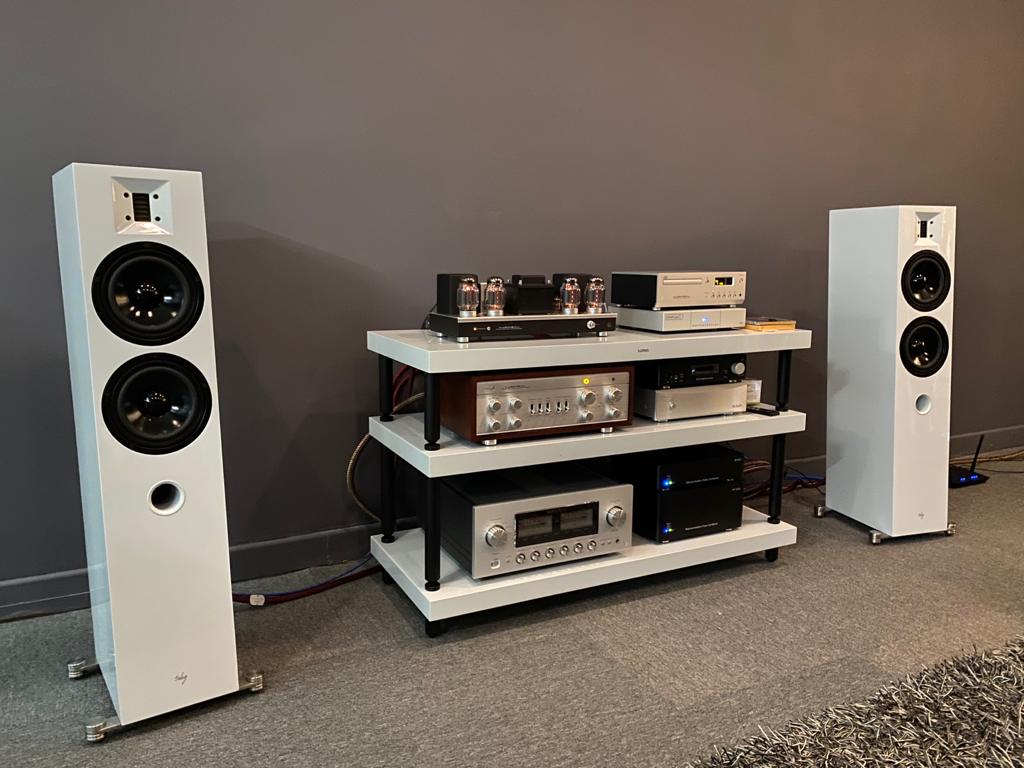I voted No, but my rack is between my speakers. In a more perfect world it would be off to one side with longer cables from pre-amp to power amps (behind their speakers). Also my apartment would be half English country house and half beachside bungalow with Barbara Eden organising everything from her bottle.
Sage advice. Take it from someone who will celebrate our 52 anniversary tomorrow. Been together 56 1/2 years. Successful marriage is not 50/50. It’s 90/90.
I voted yes. But not because of the sound. I upgraded my amplifier, the new one needs more space. 
I was interested to experience this recently - my new speakers are much larger and more obvious in the room, and my room layout is such that the left speaker is more obvious visually. This was playing havoc with what I perceived as the soundstage being off centre - it took me a while and quite a lot of measurements to realise that most of this was down to my visual focus being drawn to the left speaker.
My racks are behind and left of the left speaker.
After thinking through many scenarios, I’ve decided to place my rack on the side wall. Cheers!
I agree that everything in the room affects the sound from the speakers, and anything between the speakers can influence that sound. Whether or not it is an influence that the listener likes or dislikes is subjective and cannot be answered in a yes/no fashion.
Even a flat screen television is subjective. I had a smaller flat screen between my speakers and I liked it without a blanket over it because it livened up the sound. When I got a much larger screen, I preferred to push it against the wall instead of having it further out.
Rack placement isn’t a myth, but the benefits and/or drawbacks are entirely subjective.
I’ve bookmarked this quote as a response for all future question on hardware on the forum ![]()
Also depends on loudspeaker radiation patterns. Dipoles have nulls out the sides. so you can do what you like in those areas. If you aren’t using dipoles, then god help you. 
Sheldon
I discovered (by accident) that placing my rack between the speakers, but off to one side, very close to one of the speakers, allows a better stereo image. I think if it’s right in the middle, it may be more problematic.
I’m not sure it’s an exact science, though. Room acoustics and equipment/supports are all so varied, my thought is you just need to experiment in that room with that equipment.
Often practicalities (and how expensive a run of your particular speaker cables is) dictate this more than out and our sound quality.
P.S., also using two lower racks (well away from tweeter height) next to speakers rather than one tall rack in the middle seemed to help previously.
I think there are too many variables to come up with a rule. A wooden suspended floor Vs a solid concrete one, for example, will cause more differences than any rack placement.
… and also the type of wood you use whether solid oak or MDF.
I always wanted a Linn Sondek and finally got a 2nd hand one only to find my suspended floor a deck using springs and family don’t mix 
Update: seems like I am still going back and forth “front wall”, “side wall”, “front wall!”, “side wall!”… I’ll get there eventually, slowly but surely.
Here’s an example - this looks great (need to move it further to the back) and color will go very well with my white KEF speakers  .
.
Most of us must put our gear where it best fits in the room and where is most convenient for ease of use. That usually means between the speakers. With the use of room correction software, most room anomalies can be compensated for.
And If you have a stereo amplifier and high quality speaker cables the rack goes in the middle.
Equipment rack should be… in another room?
I think there’s more to the question than it seems. Speaker placement, including how far from walls & distance apart, the type of speaker (design), the room itself, room correction if at all and so on, make the question rather difficult to answer as per a rule of thumb.
Cheers!

